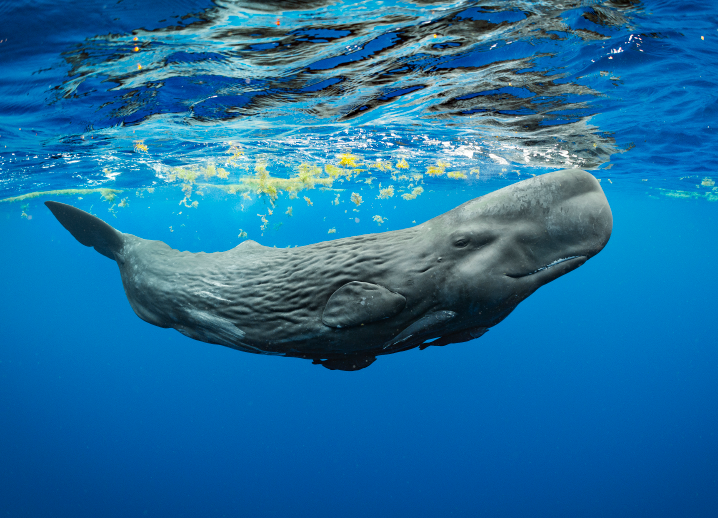How could you impact the world if, every day, you had the opportunity to share experiences with humanity that most will never witness in their lifetime?
For Brian Skerry, National Geographic Explorer and celebrated underwater photographer, he captures these rare moments and shares them with the world, spreading messages of conservation, sustainability and humanity. From an orca offering its meal to him, to documenting for the first time a sperm whale calf nursing in the Caribbean Sea, Brian has captured some of the most unique natural wonders in one of the last frontiers of our planet: the ocean.
So, who is this man behind these moments? We had a chat with Brian to learn more about his unconventional career and how he got here!
What’s Brian’s niche topic of work?
Brian’s niche has truly evolved over the years — he’s held the titles of still photographer, photojournalist, filmmaker, producer and director, to name a few. Today, however, he goes by visual storyteller, specializing in ocean subjects and marine wildlife. Brian is also a National Geographic contributing photographer and has been for more than 25 years, working on more than 30 feature stories for the organization during this time.
What inspired Brian to pursue a photojournalism career for the marine world?
Growing up, his parents would take him to beaches in Massachusetts, and from a young age, he always found something very inspiring and mysterious about the ocean. He felt comfortable in the water, yet intrigued to learn more about what lived under the waves that he was gently bobbing on. Like many marine lovers, he grew up watching Jacques Cousteau documentaries on TV and also lived vicariously through National Geographic magazines that depicted a life full of adventure.
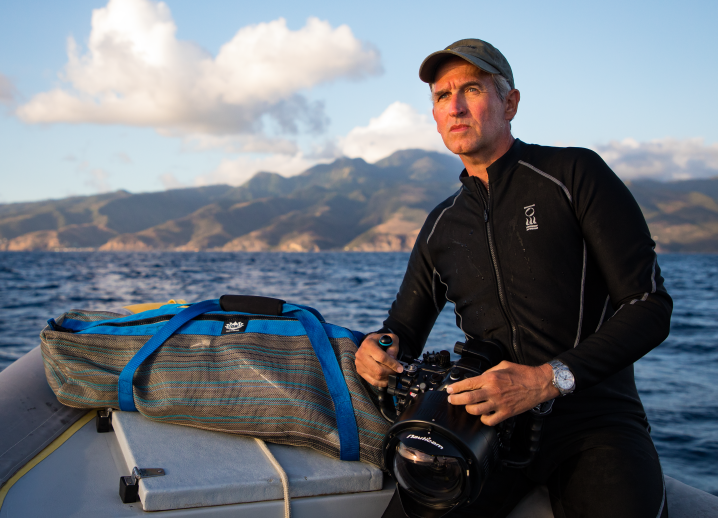 Credit: Steve de Neef
Credit: Steve de NeefFlash forward to when Brian was 15 years old and began scuba diving. He was a very visual person and quickly found out that his love of photography on land could transfer to water, showing him a new way to discover the ocean and its inhabitants. What started out as fun quickly developed into a lifelong dream of telling the stories of marine animals through photography — and what better place to aim for than National Geographic? From the beginning, Brian set his sights on becoming involved with the organization, and after 25 years with them, he’s still fulfilling his dream every day.
What does it mean to be a National Geographic Explorer?
For Brian, above all, it’s a great honor and privilege to be a National Geographic Explorer. As a photographer and storyteller for the organization, he feels a profound sense of responsibility and duty to share stories of what he believes the world needs to know. It’s also a dream come true!
What’s his favorite career memory so far?
There are endless amounts of memories that stand out for Brian, and we can’t blame him! For “Secrets of the Whales” alone, he travelled to more than 24 locations, from the equator to the poles, and dove with five different species of whales, all of whom are very unpredictable. Everything — visibility, lighting, the behavior of the animal, timing, proximity — has to line up in order to get the shot or experience what the whales are letting you see. To be part of the moment and capture the image, the whales need to let you into their world and that doesn’t happen most of the time.
What is a unique encounter or surprising revelation Brian had about “whale culture” while out in the field?
“Secrets of the Whales” was based on the latest and greatest science of whale culture; it was created to be a very intimate look at the featured whale families while working alongside scientists to include research and information. Due to this, it was important to make the distinction that culture and behavior are two separate things. Shane Gero, sperm whale researcher, best explained the difference to Brian while they were on assignment for the project: Behavior is what we do, culture is how we do it. For example, humans eat food with utensils, which is a behavior, but choosing to use a fork instead of chopsticks is culture.
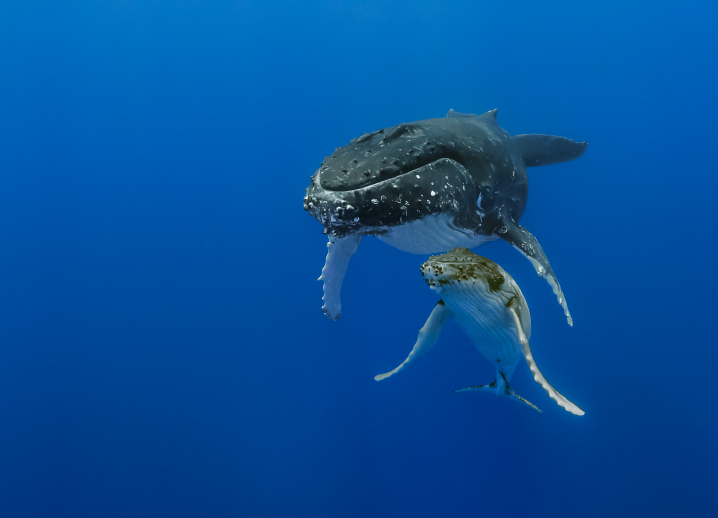 A mother humpback whale with her calf. Credit: Brian Skerry
A mother humpback whale with her calf. Credit: Brian SkerrySo how does this transfer to Brian’s unique encounters in the field? While covering these whale families, the team witnessed many observations of whale culture. For orca whales, each family had a different feeding strategy based on their location in the world (culture), but all orca families passed down feeding strategies from one generation to another (behavior). Witnessing three years of whale families and their cultures was a revelation for Brian —he could literally see the culture of these creatures unfolding before his eyes.
He saw beluga whales playing games with rocks, documented the spread of a new male humpback whale song across a continent, discovered that sperm whale families would gather every few days to bond and so much more. These experiences served as a reminder of what we already know as a human race: that we need each other, and we need community. We need to take the time to appreciate the little things, like having coffee with a friend or calling a grandparent, that make our lives so rich.
Brian’s time with the whales reminded him of how similar we are, and that the same things the whales cherish and hold dear are the same things that we as humans do, too.
Some critics may say life offshore doesn’t affect us. What would Brian tell a doubter about the intrinsic link between whales and humans?
Quite simply, that’s not true according to Brian. Humans live on a water planet even though we are terrestrial creatures and see our world from a terrestrial viewpoint. Three quarters of our planet’s surface is water, and water is 98% of where life can exist on Earth. Every other breath we take comes from the ocean, and it gives more oxygen than rainforests and plants.
Brian was also quick to point out that the health of our oceans dictates the future of our own health, too. In the last 50–60 years, about 90% of big fish have been removed from the ocean, we’ve lost half of the world’s coral reefs, 18 billion pounds of plastic have been dumped into the ocean and so much carbon is in Earth’s atmosphere that it’s changed the ocean’s chemistry to become more acidic. Now, much of the marine life within is eroding. At one point in “Secrets of the Whales,” the team is shown freeing sea turtles from fishing lines, nets and in one case, a laundry basket. In another episode, the scene cuts to an orca whale with a buoy line wrapped around its pectoral fin. Then we see an orca whale mother carrying her dead calf, who likely died from the toxins (carcinogens, PCBs and other pollutants) passed in utero from the mother. By showing the lives of these animals through another lens and inspiring the audience to fall in love with them, maybe some can be moved to protect the oceans.
Overall, the ocean is like a finely made Swiss watch — every little gear and big gear has to mesh. If one is removed, the clock begins to falter and won’t function like it was designed to. So, if one species in the ocean goes extinct, the food chain falters, the ecosystem changes and our planet suffers.
Charleston falls within the migratory path of critically endangered North Atlantic right whales. How is he shedding more light on the plight of this species?
For Brian, it all starts with better awareness for the species. These whales have been around for eons, but now they’re the most endangered whale on earth. Just think about that: These animals are on the brink of extinction and they live right off of our coast.
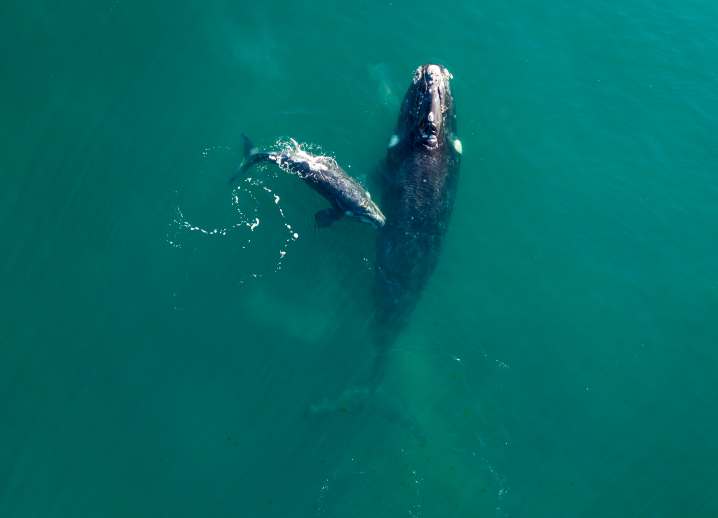 A North Atlantic right whale mother and calf.
A North Atlantic right whale mother and calf. In 2008, Brian worked with National Geographic to create a gatefold feature on North Atlantic right whales specifically. He and his editor at the time, Kathy Moran, took a photo of each individual North Atlantic right whale at the time and decreased it to the size of a postage stamp. Each photo was placed side-by-side on a the page, so that readers could figuratively hold the entire species in their hands. This feature’s main goal was to help people understand the whales’ family trees, personalities and culture, while also demonstrating how few of them are left. Only through better understanding and awareness will right whales stand a chance.
What is one thing that an individual can do to protect whales? What is one thing a community can do?
It all starts with being informed! For individuals, making those little changes, like avoiding single-use plastic, choosing locally and/or sustainably sourced seafood and reducing your carbon footprint, are all great places to start. For a community, get involved in groups that work to help save a particular species, like the North Atlantic right whale. Communities can come together to donate, volunteer and advocate locally, all of which impact the endangered species as well.
If Brian could sit down and have a conversation with anyone from conservation history, who would it be?
Brian has had the privilege of befriending Jane Goodall, Sylvia Earle and the entire Cousteau family throughout his career, all of whom he’d gladly enjoy a conversation with again. Looking back through history, however, Brian would love the opportunity to talk with Charles Darwin and Jacques Cousteau.
What’s a fun fact that most people are surprised to learn about Brian?
Many might think that being a National Geographic Explorer is only achievable if you come from high status or a place of privilege, which is simply not the case. Brian never takes his experiences or work for granted and continues to strive to find new ways of connecting with people to share messages that impact us all. He always wants to make it count.
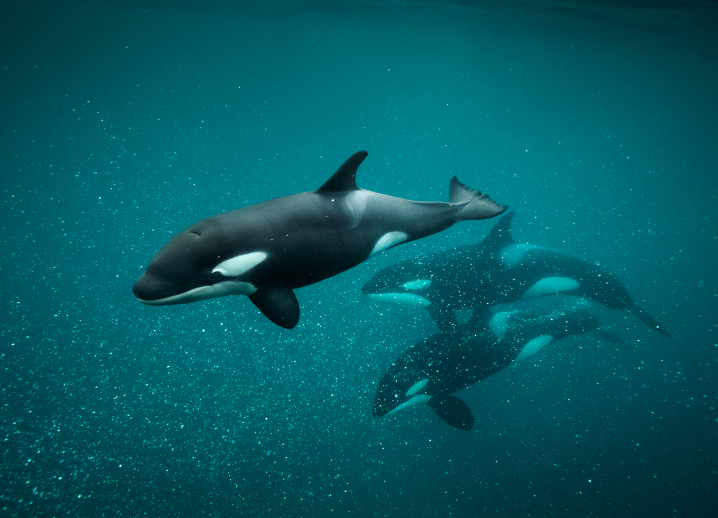 A pod of orca whales. Credit: Brian Skerry
A pod of orca whales. Credit: Brian SkerryWhat’s Brian’s favorite ocean creature?
With their alarming intelligence and cognitive awareness, orcas are special creatures to Brian. If he could only photograph one animal for the rest of his life, it would be whales; if only one species, it would be an orca. (Don’t worry though, he’s an advocate for all whales)!
Want to hear more from Brian himself? Join us as the Charleston Gaillard Center presents National Geographic Live: Secrets of the Whales with Underwater Photographer, Brian Skerry, on January 31 at 7:30 p.m.! National Geographic Live is National Geographic’s touring series that brings to life the real and awe-inspiring stories of Nat Geo Explorers and Speakers.
Published December 1, 2022


